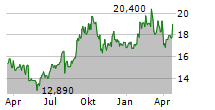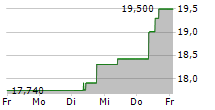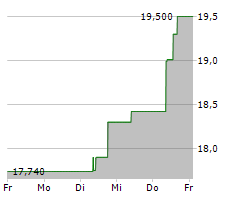

Breakthrough technology accelerates development of algorithms for practical use in quantum computers
TOKYO, Feb 19, 2024 - (JCN Newswire) - Fujitsu today announced the development of a novel technique on a quantum simulator that speeds up quantum-classical hybrid algorithms, which have been proposed as a method for the early use of quantum computers, achieving 200 times the computational speed of previous simulations. For quantum circuit computations using conventional quantum and classical hybrid algorithms, the number of times of quantum circuit computation increases depending on the scale of the problem to be solved. Larger-scale problems that require many qubits, including simulations in the materials and drug discovery fields, may even require several hundred days.
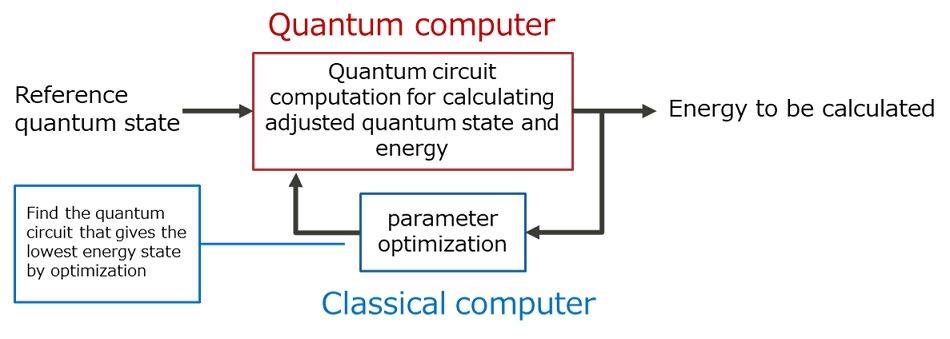 |
| Figure 1: Overall VQE flow |
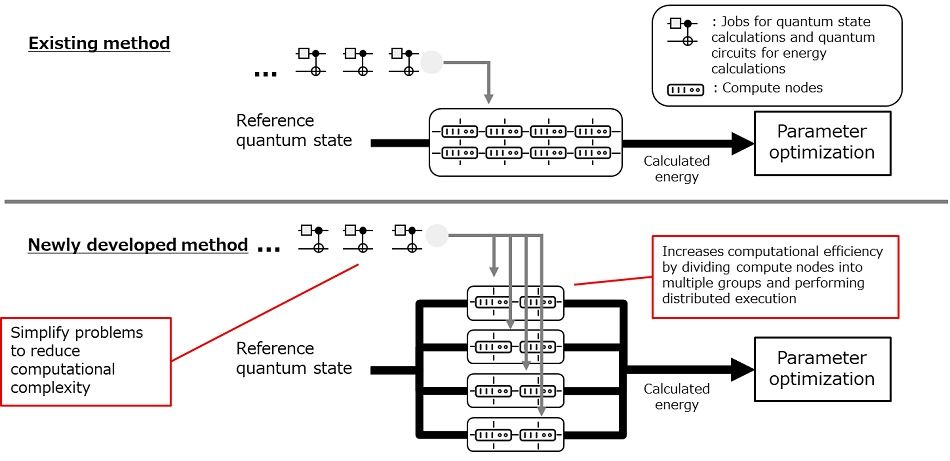 |
| Figure 2: Processing flow of quantum circuit computation for optimization |
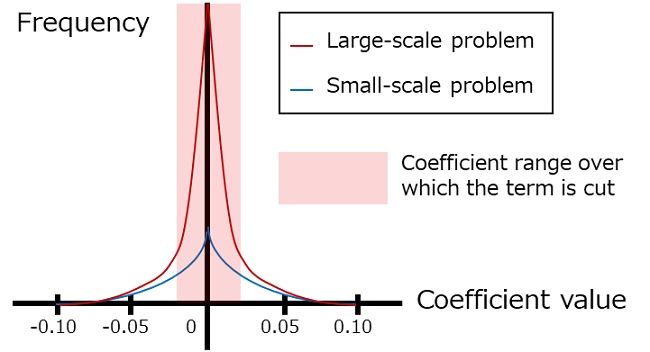 |
| Figure 3: Differences in the frequency distribution of the coefficient values of the equation by the scale of the problem |
The newly developed technology enables simultaneous processing of a large number of repetitively executed quantum circuit computations distributed among multiple groups. Fujitsu has also devised a way to simplify problems on a large scale with less loss of accuracy by using one of the world's largest-scale quantum simulators (1)it has developed. Fujitsu has made it possible to perform computations on a quantum simulator in just one day, which would take an estimated 200 days to complete with conventional methods. As a result, it is now possible to complete simulations of large-scale quantum computation within a realistic timeframe and to simulate the behavior of larger molecules computed by a hybrid quantum-classical algorithm, leading to algorithm development.
Fujitsu plans to incorporate this technology into its hybrid quantum computing platform to accelerate research into the practical application of quantum computers in various fields, including finance and drug discovery. Additionally, Fujitsu will not only apply this technology to quantum simulators, but also to accelerate quantum circuit computations on actual quantum computers.
Background
Although the development of fault-tolerant quantum computers (FTQC (2) ) is currently progressing worldwide, current quantum computers face many problems, such as the inability to eliminate the effects of noise. At the same time, in order to demonstrate the usefulness of quantum computers ahead of FTQC, practical applications for small and medium-sized quantum computers (Noisy Intermediate-Scale Quantum Computer, NISQ) with noise tolerance of 100 to 1,000 qubits are being studied.
By applying VQE (3), a typical NISQ algorithm, Fujitsu, for example, has developed a quantum simulator for quantum application development (4) and has been working to speed up quantum circuit computation itself. However, in VQE, the number of iterations of quantum circuit computation increases as the size of the problem increases, so it takes a very long time to perform computation, especially for large problems requiring many qubits, and it is estimated that it takes several 100 days for a quantum simulator. Therefore, it was difficult to develop quantum algorithms for practical use.
Outline of the newly developed technology
In response to this problem, Fujitsu has developed a technology that achieves 200 times higher the performance speed of conventional technologies by simultaneously distributing multiple repetitively executed quantum circuit computations and reducing the amount of quantum circuit computations by reducing accuracy degradation.
Distributed concurrency of optimization processes requiring repeated computation of quantum circuits
Quantum-classical hybrid algorithms seek a quantum circuit that provides the lowest energy state, for example, the ground state of a molecule, by alternating between the process of performing quantum circuit computation and the process of optimizing quantum circuit parameters (5) using a classical computer. However, for parameter optimization of quantum circuits by classical computers, it is necessary to prepare a large number of quantum circuits with small changes in parameters, perform quantum circuit computation for all of them sequentially, and derive the optimal parameters from the results. This requires considerable time for computation, especially for larger-scale problems. Increasing the number of nodes simply to speed up circuit computation has conventionally been limited by communication overhead, and new technologies were required.
Focusing on the fact that quantum circuits with small parameter changes can be executed without affecting each other, Fujitsu has developed a distributed processing technology that enables each group to execute different quantum circuits by dividing the computation nodes of the quantum simulator into multiple groups and using RPC (6)technology to submit quantum circuit computation jobs through the network. Using this technology, multiple quantum circuits with different parameters can be simultaneously distributed and calculated, and the computation time can be reduced to 1/70th of the conventional technology.
In addition, since the computation quantity in the quantum-classical hybrid algorithm is proportional to the number of terms in the equation of the problem to be solved, and the number of terms is the fourth power of the number of qubits in the general VQE, the computation quantity increases as the problem scale increases, and the result cannot be obtained in a realistic time. Through simulations of large molecules using 32 qubits of one of the world's largest 40 qubit quantum simulators, Fujitsu has found that the ratio of terms with small coefficients to the total number of terms increases as the scale increases, and that the effect of terms with small coefficients on the final results of calculations is minimal. By taking advantage of this characteristic, Fujitsu was able to achieve both a reduction in the number of terms in the equation and prevention of deterioration in computation accuracy, thereby reducing the quantum circuit computation time by approximately 80%.
By combining these two technologies, Fujitsu was able to demonstrate for the first time in the world that when distributed processing of 1024 compute nodes into 8 groups for a 32 qubit problem, it was possible to achieve a quantum simulation run time of 32 qubits in one day, compared to the previous estimate of 200 days. This is expected to advance the development of quantum algorithms for problems with a large number of qubits and the application of quantum computers to the fields of materials and finance.
Yukihiro Okuno, Senior Research Scientist, Analysis Technology Center, Fujifilm Corporation, comments:
"We are investigating the application of quantum computers to materials development. Among them, the use of VQE in NISQ devices is an essential consideration. We expect that this acceleration technology will greatly speed up the principle verification of the VQE algorithm."
Tsuyoshi Moriya, Vice President, Digital Design Center, Tokyo Electron Limited, comments:
"We are studying the use of VQE to calculate the energy of molecules related to semiconductor materials, to predict the electronic structure and physical properties of specific materials, and to optimize chemical reactions in semiconductor manufacturing processes. We hope that accelerating this process will enable us to quickly verify the principle and effectiveness of the VQE algorithm and discover its usefulness. NISQ devices whose use is limited by noise and errors will be considered with an eye toward these limitations."
[1] One of the world's largest-scale quantum simulators :It is one of the world's largest permanent dedicated units of State Vector (As of February 2024, according to Fujitsu), a universal quantum circuit simulation method.
[2] FTQC :Fault-Tolerant Quantum Computer. Quantum computer capable of executing quantum computation without error while correcting quantum error.
[3] VQE :Abbreviation for Variational Quantum Eigensolver, a technique for determining the energy of matter by repeating computation with a quantum computer and optimization with a classical computer.
[4] A quantum simulator for quantum application development :Fujitsu achieves major technical milestone with world's fastest 36 qubit quantum simulator (March 30, 2022)
[5] Quantum circuit parameters :Rotation angle of the gate of the quantum circuit for adjusting the reference quantum state to a physically meaningful quantum state.
[6] RPC :Short for Remote Procedure Call. The art of performing a process from one computer to another over a network or the like.
About Fujitsu
Fujitsu's purpose is to make the world more sustainable by building trust in society through innovation. As the digital transformation partner of choice for customers in over 100 countries, our 124,000 employees work to resolve some of the greatest challenges facing humanity. Our range of services and solutions draw on five key technologies: Computing, Networks, AI, Data & Security, and Converging Technologies, which we bring together to deliver sustainability transformation. Fujitsu Limited (TSE:6702) reported consolidated revenues of 3.7 trillion yen (US$28 billion) for the fiscal year ended March 31, 2023 and remains the top digital services company in Japan by market share. Find out more: www.fujitsu.com.
Press Contacts
Fujitsu Limited
Public and Investor Relations Division
Inquiries (https://bit.ly/3rrQ4mB)
Source: Fujitsu Ltd
Copyright 2024 JCN Newswire . All rights reserved.
© 2024 JCN Newswire

